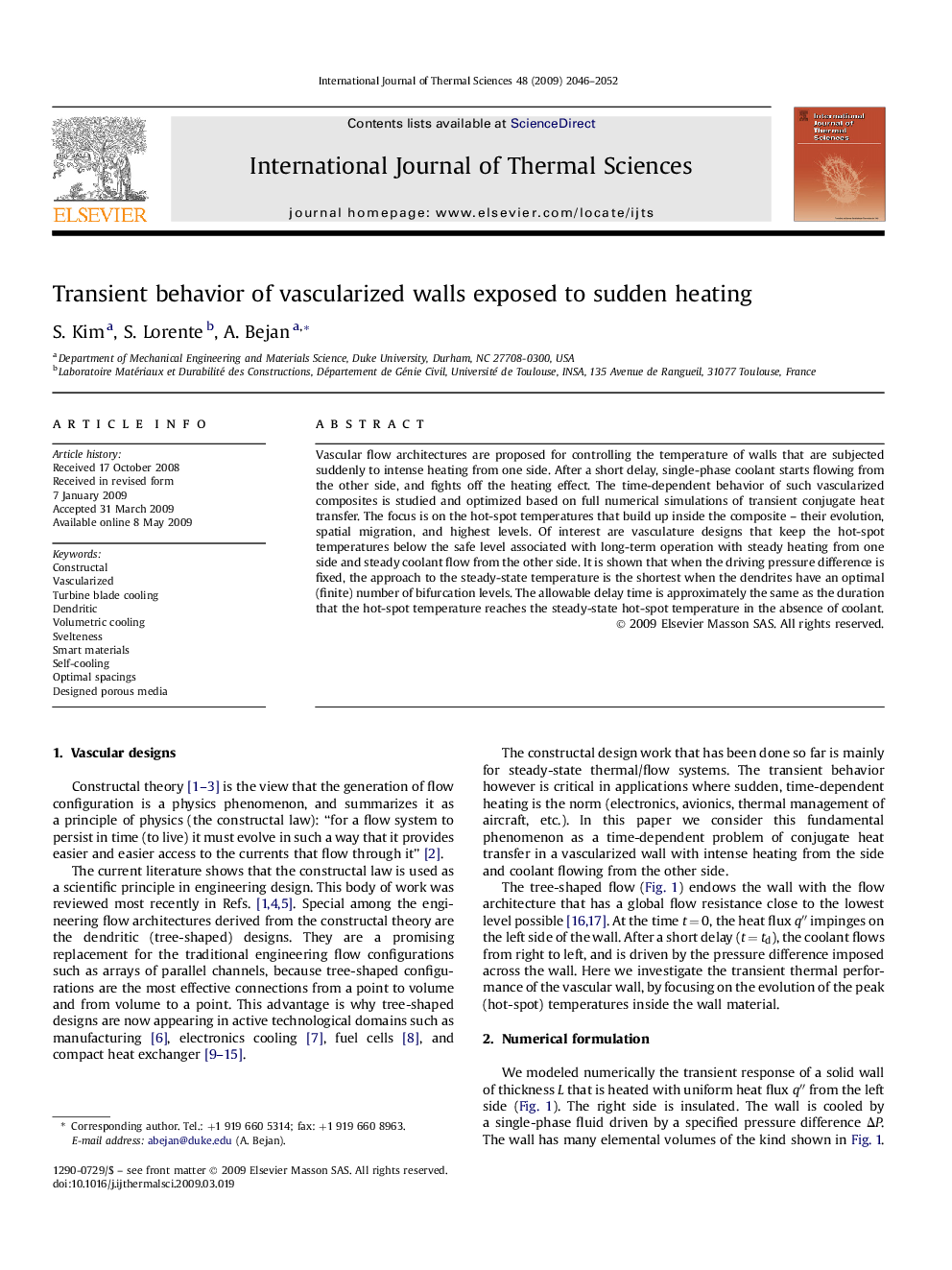| Article ID | Journal | Published Year | Pages | File Type |
|---|---|---|---|---|
| 668987 | International Journal of Thermal Sciences | 2009 | 7 Pages |
Vascular flow architectures are proposed for controlling the temperature of walls that are subjected suddenly to intense heating from one side. After a short delay, single-phase coolant starts flowing from the other side, and fights off the heating effect. The time-dependent behavior of such vascularized composites is studied and optimized based on full numerical simulations of transient conjugate heat transfer. The focus is on the hot-spot temperatures that build up inside the composite – their evolution, spatial migration, and highest levels. Of interest are vasculature designs that keep the hot-spot temperatures below the safe level associated with long-term operation with steady heating from one side and steady coolant flow from the other side. It is shown that when the driving pressure difference is fixed, the approach to the steady-state temperature is the shortest when the dendrites have an optimal (finite) number of bifurcation levels. The allowable delay time is approximately the same as the duration that the hot-spot temperature reaches the steady-state hot-spot temperature in the absence of coolant.
